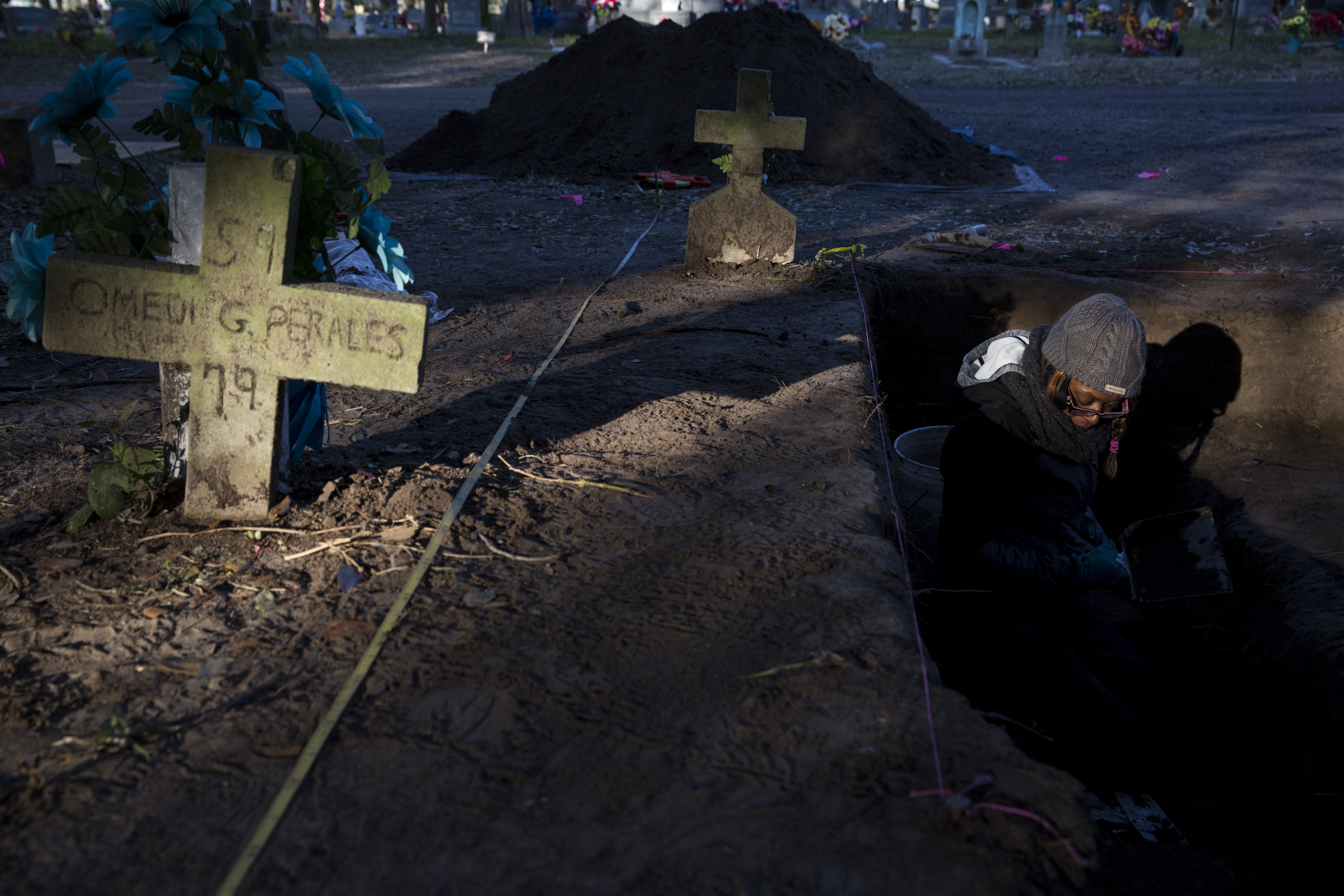
NOGALES, Mexico — In a hotel room illuminated by the fall sun, a social worker swabbed inside the cheek of Nohemy Alvares to collect a sample of her DNA.
A desperate search to find her son led Alvares to the U.S.-Mexico border, where nearly four years ago Gilver, then an impulsive 14-year-old chasing a dream, vanished in the vast desert expanse. By sending her genetic information out into the world, Alvares hopes that science might find her Gilver.
“I know my son is alive,” Alvares insisted. “If he were dead, his DNA would be collected, like mine, only from a bone sample.”
But making that connection between two DNA samples isn’t as easy as many think it is.
Deoxyribonucleic acid, or DNA, is capable of identifying a person from as little as a strand of hair. But tapping its potential is quite another matter. For one thing, there is no central repository for storing genetic material. A government database might have the DNA of unidentified remains, while the DNA of a family member, necessary for an identification, is stored in a private database unconnected to the government one.
If they do not share information, as is often the case, an identification may never be made.
The difficult challenge of identifying the migrants who have disappeared on their way to the United States — there have been more than 6,000 migrants found dead along the Southwest border since 2000 — and countless others who were victims of Mexican drug cartels, is compounded by international borders and shifting immigration policies.
Amid this stark reality, teams of forensic anthropologists, academics and immigrant advocacy groups are cobbling together partnerships across the region under the umbrella of the Forensic Border Coalition in an attempt to bring closure to grieving families.
“There’s a gigantic fragmentation at every level, at the DNA level, at the justice system, in Mexico and the U.S.,” explained Mercedes Doretti, director of the Argentine Forensic Anthropology Team, which was established in 1984 to investigate the cases of disappeared people killed during Argentina’s military dictatorship.
Since 2010, the Argentine team, known as EAAF by their Spanish-language initials, has collected about 3,000 family reference DNA samples all across Central America and Mexico. EAAF was assigned to a forensic commission in 2012 in the aftermath of several massacres in northern Mexico.
Doretti’s team of forensic anthropologists was handed the remains of 200 people recovered from massacres in San Fernando, Tamaulipas, and mass graves in Nuevo León. The forensic information gathered from these remains are kept in the Mexican attorney general’s database. The remainder of EAAF’s work is stored at Bode Cellmark Forensics, a private lab in Virginia.
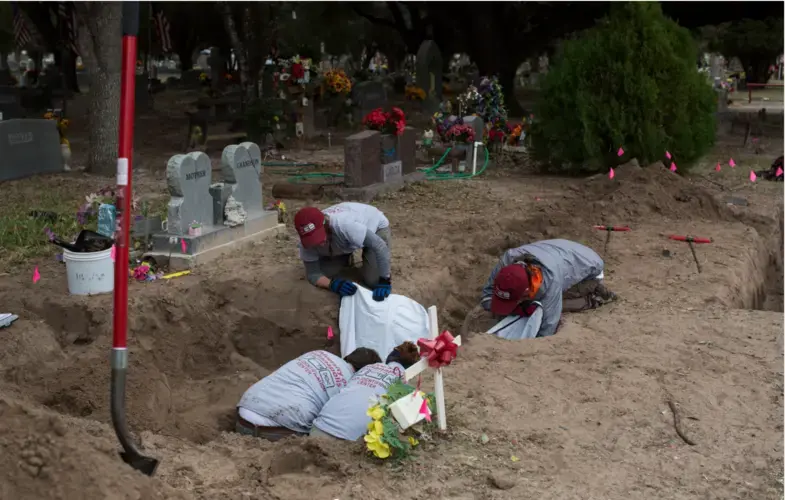
As the forensic commission began its work, the bodies of hundreds more migrants were piling up all through the South Texas brush country. While Mexico and Central America pose one set of challenges to the practice of forensic science, the confounding variety of rules for handling the unidentified along the southwestern border offers up another, though none quite as muddled as in Texas.
Some counties have medical examiners to declare deaths, others rely on justices of the peace for those declarations, but all counties are required by Texas law to send a DNA sample to the Combined DNA Index System, or CODIS. The FBI program, administered by the University of North Texas, compares DNA against profiles of the unidentified human remains and missing-person reports collected in the National Missing and Unidentified Persons System, known as NamUS.
This didn’t happen in the cash-strapped county of Brooks. The tiny county, with around 7,000 people, buried dozens of migrants at Sacred Heart Cemetery in Falfurrias under nameless markers, a common practice in border counties that lack the financial resources for a medical examiner.
By 2015, the Legislature ordered the Texas Forensic Science Commission to develop a method for collecting forensic evidence of unidentified bodies located near the border, and Texas State University’s Forensic Anthropology Center in San Marcos was assigned the considerable task of exhuming human remains for identification.
“It was a mass disaster,” said Kate Spradley, the assistant professor of anthropology at Texas State University leading the effort. “It is some of the most unpleasant work you can imagine.”
It’s in the details
Maria Dolores was identified using a child’s drawing. Her remains arrived with more than 100 sets from Baylor University over the summer. Among her personal effects was a colorful sketch of an anthropomorphic heart with arms, legs, hair and a face. A name was written on the drawing and envelope, there was a prayer in Spanish and specific mention of Ecuador.
The Texas State forensic anthropologists created a missing persons profile for Maria Dolores on NamUS. A Google search turned up a flyer searching for a 28-year-old Ecuadoran woman last seen alive in Reynosa. Other biological details further developed their identification hypothesis. Still, they needed to locate the family.
Confirming the identity of Maria Dolores involved multiple lines of evidence, and DNA was the last. Texas State’s partners in the NGO community found her siblings in New York, and her parents and children in Ecuador.
By law, the forensic anthropologists were compelled to provide CODIS a sample of Maria Dolores’ genetic material. But her family preferred not to have their information in a U.S. government database, said Timothy P. Gocha, a forensic anthropologist with Operation Identification at Texas State University, so Bode was used instead, and within two weeks they had a match.
“Ideally every family missing someone would provide a DNA sample, and every agency working with unidentified persons would do the same,” Spradley said. “In practice, it is quite complex, and ultimately the process is dependent on human analysts.”
A cold hit occurs when nuclear DNA, collected from the blood or saliva of a parent, is linked to the DNA profile of an unidentified or missing person in NamUS. When the nuclear DNA of the unidentified person is degraded, such as with skeletal remains, mitochondrial DNA can be used to match human remains to maternal relatives.
Of the more than 225 sets of remains in the Texas State University lab, 143 have been processed for DNA. But just six have been identified through CODIS. Another 17 identifications were solved with the help of the Argentine team. Four are pending. The rest are still unidentified.
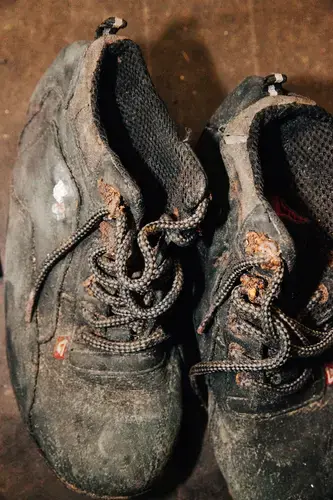
While Spradley and her crew busily unearth remains, Dr. Corinne Stern, Webb County’s chief medical examiner, takes in the decomposing bodies collected above ground from 10 surrounding counties that lack resources or medical expertise. Last year, her office received 124 sets of remains.
To begin an autopsy, Stern takes an inventory of all clothing and personal effects. On occasion, head and chest X-rays will reveal plates or screws with serial numbers that can be tracked. Dental X-rays are next, followed by fingerprints and a blood sample on a filter paper card. If the body arrives in an advanced state of decomposition, two to three inches of tibia are taken from the right and left legs.
Stern is a proponent of the CODIS system, which allows for a variety of search functions. The unidentified are always cross-referenced with the missing and criminal cases, but family reference can only be used to search for the unidentified, Stern explained. It is also free, whereas Bode, and other private databases, can be cost prohibitive for counties on a tight budget.
Once the association is made, CODIS can pull out family reference samples at the request of a foreign consulate, according to Stern. The FBI declined to confirm the procedure in these matters.
“There’s no reason for anyone to ever be concerned that something is going to happen to them criminally because they submitted their DNA into CODIS to find a loved one,” Stern said. “A certain group out there tries to tell you otherwise, which is untrue, and it’s keeping some people from being identified.”
An identification can, on occasion, be tracked through consulates, provided there is a missing-person report, and family reference DNA. In those cases, the Argentine team will share information with administrators at UNT for a one to one comparison outside of the CODIS system.
Doretti and Spradley, together with Robin Reineke, co-founder of the Colibrí Center for Human Rights, also compare reports of the missing on a monthly basis, a painstaking process. For all practical purposes, the absence of a mechanism to compare DNA in private databases to DNA in the CODIS system has likely prevented hundreds of identifications from taking place, forensic experts say.
Furthermore, efforts to arrange a one-time comparison of all family reference DNA in Bode to the unidentified in CODIS has repeatedly hit snags. During the summer of 2015, the Texas Forensic Commission brought the CODIS administrators, EAAF and others to the table in order to hammer out a genetic sharing agreement. It appeared that a deal was at hand, but just as all previous discussions had done, the conversation stalled.
“The EAAF has certain requirements it will not compromise on, and the FBI has certain legal requirements and concerns about the integrity of the national database,” explained Lynn Garcia, general legal counsel for the Texas Forensic Science Commission.
One disagreement has been the donor samples collected by EAAF over the years. The FBI requires that all samples include telephone numbers and addresses of migrant families, a condition that Doretti contends is unnecessary to process a DNA comparison.
Another sticking point has been the prospect of a law enforcement officer sent to gather the DNA of a person in the country illegally. This has caused some families to shun the official process, and seek out non-governmental agencies instead, especially in the current political climate.
Though it would seem migrant families prefer private labs to government institutions, these labs have arguably contributed to the fragmentation of the forensic science community, according to some UNT forensic experts. As the number of private databases increases, the overall success rate declines.
“You put rules in place and some people see them as roadblocks,” said Dixie Peters, technical leader for the UNT Missing Persons Unit. “They do own an important part of the puzzle, but these are the problems to linking this puzzle together.”
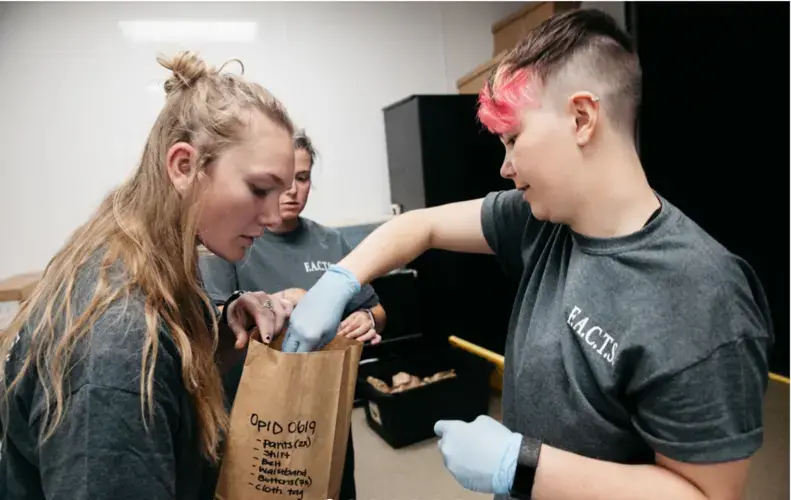
Bruce Budowle, co-director of the Center for Human Identification at UNT Health Science Center, and the FBI declined to comment for this story.
To mitigate concerns about the role of government in identifying migrants who have died trying to cross the southwestern border, the Tucson-based Colibrí began collecting DNA from relatives of missing migrants.
The Colibrí organization, which serves primarily as liaison between families and the Pima County Office of the Medical Examiner and families, has helped solve more than 100 cold cases since 2006, and has had a hand in thousands of others. Responding to the 942 unidentified still in the medical examiner’s office, Colibrí launched a DNA program at the beginning of the year.
Over the next three years, Colibrí will visit five cities to gather DNA, which it sends to Bode, the same lab used by EAAF. Despite assurances to shield migrant families from immigration authorities, fear has kept some from attending events in San Francisco, Los Angeles and Phoenix, said Chelsea Halstead, Colibrí program manager.
“Even if all of the unidentified remains were uploaded into CODIS you still only have half of the data,” Halstead said. “If you don’t have family reference samples you aren’t going to make identifications.”
Earlier this year, the U.S. Department of Justice National Institute of Justice redirected grant funding for DNA on the unidentified to resolve the backlog of sexual assault kits. Until quite recently, UNT accepted DNA submissions from anywhere in the country, and stored them in CODIS for free. For now the CODIS administrator in North Texas will only process DNA of unidentified persons found in Texas.
“You might be able to find funding for one-to-one comparisons,” Hess said optimistically. “Most of us will probably have hundreds of samples of unidentified individuals until a new funding source comes up.”
To be sure, the preponderance of migrant deaths along the U.S. border is fraught with bureaucratic complication, but this pales in comparison to the scope of migrants who disappeared in Mexico.
The likelihood of an unidentified person’s DNA being deposited into the attorney general’s database, the largest repository of DNA in Mexico, or the Scientific Police database under the National Security Commission, depends entirely on whether state forensic services take the time to enter the genetic information, which many are under no obligation to do. And still the profile is only useful if there is a family reference sample to compare the two.
Despite advances in recent years, it remains a long shot for most Central American families to find their lost loved ones in Mexico.
Nonetheless, Alvares joined a caravan of families from Honduras, El Salvador, Guatemala and Nicaragua late last year to search for their missing sons and daughters in Mexico. They gave blood and saliva at stops along the way, recounting the disappearances to forensic investigators.
Alvares told of how Gilver was left with a smuggler while his older cousin went searching for water. She has filed missing person reports in Honduras and Mexico, and provided her DNA to databases across the region. Her last deposit was made with Colibrí on the U.S.-Mexico border.
Back in Honduras, the uncertainty of his disappearance haunts Alvares’ thoughts.
“He left with a dream,” Alvares said of her son. “I’m left with the pain of not knowing.”
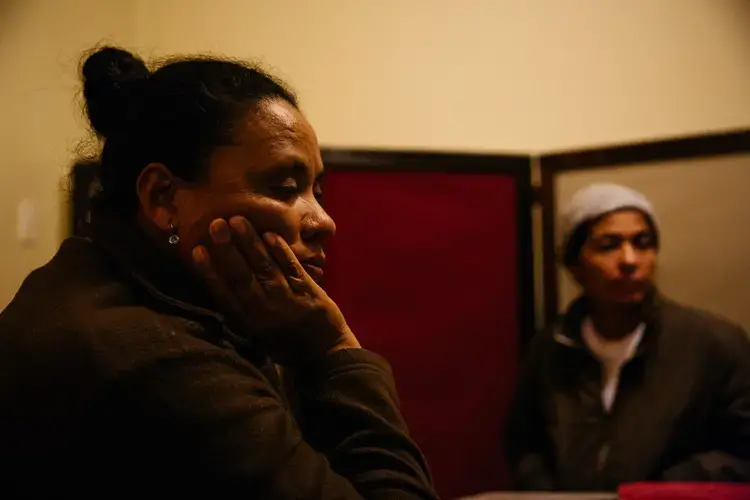
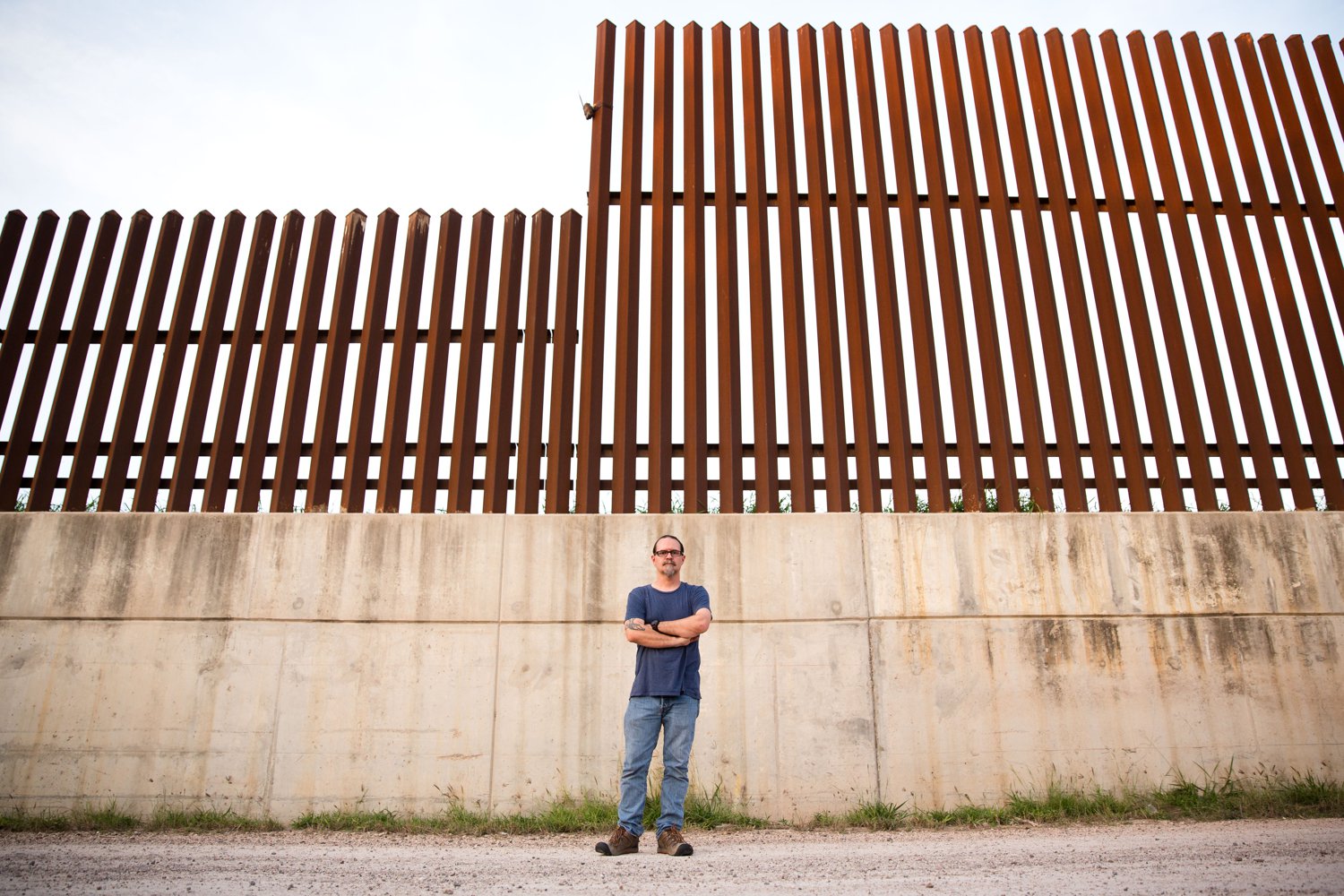
Education Resource
Meet the Journalists: Kiah Collier and Julian Aguilar
A decade ago, the federal government swept into South Texas and began seizing land to build a border...








